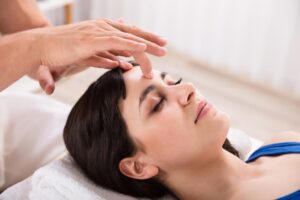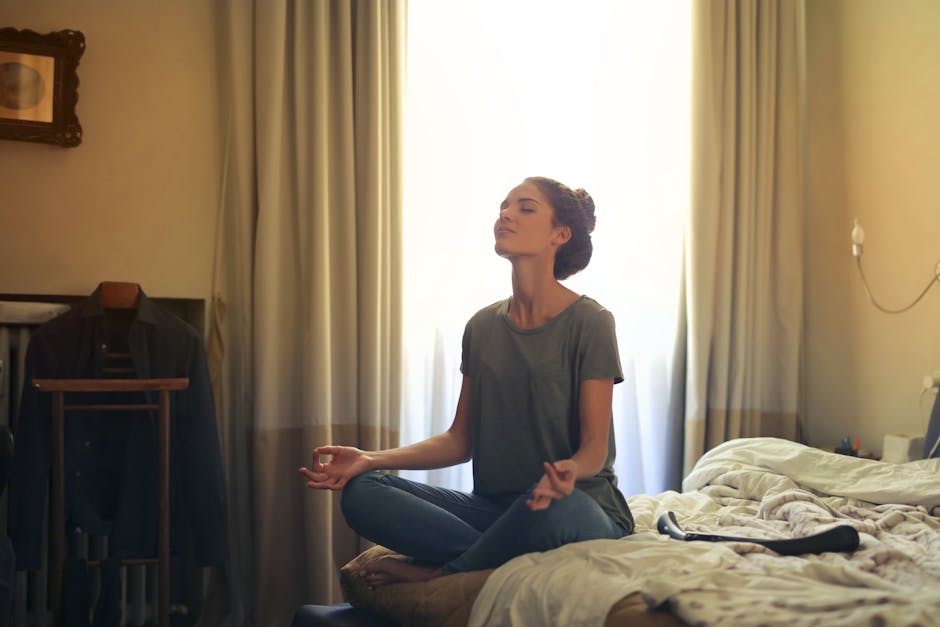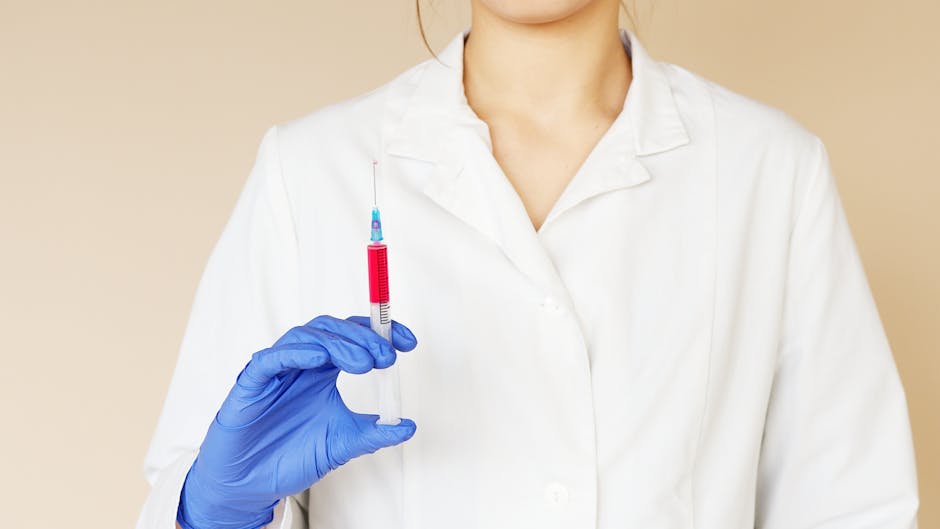Are headaches interfering with your daily life? Here are full detailed of effective home remedies for headaches.
Say goodbye to pounding pain and discover powerful natural remedies. In this article, your headache problem will be solved.
Benefits of Home remedies for relief of headache
There are several benefits of home remedies to relieve headaches. From holistic approaches like herbal teas and essential oils to lifestyle changes and stress management techniques, many natural remedies are available that can help alleviate headaches. These remedies are often kinder to the body because they are derived from plant sources and also contain beneficial compounds that can target headache symptoms and engage overall well-being.
By incorporating these natural remedies into your headache management routine, you can reduce your headache, promote active health, and prevent future episodes.
As you know Nature has provided us with several facilities. Every problem is solved by nature. There are 10 most useful remedies for the relief of headaches that are easily available at home.
Causes of Headache
Headaches can have many causes. It can be affected by various factors. some serious causes are given below
Stress
High-stress levels can cause tension headaches.
Dehydration
Not drinking enough water can lead to dehydration headaches.
Poor Posture
Bad posture can strain neck muscles and cause headaches.
Lack of Sleep: Insufficient sleep can trigger headaches.
Dietary Factors
Foods and drinks like alcohol and processed foods can cause headaches for some people.
Eye Strain
Spending too much time in front of screens or reading in poor light can strain your eyes and lead to headaches.
Understand Your Headache
Before discussing home remedies to prevent headaches, here you should know your headache type.

1.Migraine Headaches:
More severe migraine headaches can also be accompanied by nauseous feeling, light and sound sensitivity, and throbbing pain on one side of the head.
2. Cluster Headaches
Cluster headaches can last anywhere from fifteen minutes to three hours and are extremely painful. Along with the sharp pain around one eye, they often cause restlessness, nasal congestion, and red eyes.
3.Sinus Headaches:
These headaches, which are brought on by sinus congestion, hurt and press against the cheeks, forehead, and eyes.
4.Tension Headaches:
These headaches are defined by a dull, aching feeling and tightness around the forehead or back of the head. They are frequently brought on by muscle tension, stress, or anxiety.
Home Remedies for headache
Now, discover the home remedies in this content and get rid of head pain.
1-Hydration

The most effective and easy home remedy is hydration. Lack of water in your body is a common cause of headaches. To stay hydrated, make sure you drink water throughout the day. This can help you to reduce the intensity of your headaches.
♦ Tips for sating hydrate
It will be easy for you if you consider tips for sating hydration. Here are some most useful tips for proper hydration.
⇒Drink water regularly
Make your routine for drinking water. You should drink a minimum of 8 glasses in the day for proper hydration. Put a water bottle with you and sip throughout the day.
⇒Eat Hydrating foods
To maintain your hydration, include hydration-rich foods in your diet such as cucumbers, watermelon, oranges, and strawberries.
⇒Reduce dehydrating drinks
Limit your intake of sugar-filled drinks, caffeine, and alcohol as these can cause dehydration.
⇒Monitor urine color
Check your hydration status by observing the color of your urine. Light yellow and clear urine shows that your hydration status is normal.
⇒Set Reminders
It will be easy for you to set apps or phone alarms to remind drink regularly.
2-Essential Oils
Several natural oils are good home remedies for headaches. These natural oils, including peppermint, lavender, and eucalyptus, have calming qualities that can help relieve headaches. You can apply diluted oil to your temples or diffuse the scent to get relief. Here are a few oil properties:

♦ Lavender oil
Lavender oil is widely accepted for its calming and relaxing qualities. It can be applied topically to the temples or breathed in to relieve migraine headaches.
♦ Peppermint oil
This oil is well-known for its cooling properties. Peppermint oil can help relax muscles and relieve headaches. Additionally, it is also believed to improve blood flow.
♦ Clary Sage oil
Clary sage oil, which is high in linalyl acetate, also provides headache relief. Its anti-inflammatory and calming effects reduce tension and stress when inhaled or applied topically.
♦ Eucalyptus oil
Eucalyptus oil has a refreshing scent that can help open sinuses and relieve sinus headaches. It’s commonly used for steam inhalation.
♦ Lemon Balm oil
Lemon balm oil has a soothing aroma and anti-inflammatory properties that can help relieve headaches. It reduces stress and promotes relaxation, whether inhaled or used on the skin.
3-Use of Cold compress

Cold compress is the best effective home remedy. Headaches can also be relieved by using a cold compress to constrict blood vessels and reduce inflammation. Apply a cold pack for 10 to 15 minutes on your forehead or neck for instant relief. To avoid getting ice burns, avoid putting ice directly on your skin. Cover the ice pack with a cloth or towel at all times. You can also use a towel-covered bag of frozen vegetables. Proceed as needed until your headache subsides.
♦ How to use Cold compress?
To use a cold compress, you need you need these materials
- An ice pack, gel pack, or a bag of frozen peas
- Thin cloth or towel to wrap the cold source
♦ Simple steps to use a cold compress
⇒Set Up the Compress:
Cover a frozen object or an ice pack with a thin cloth or towel. This guards against frostbite on your skin.
⇒Apply the Compress:
Depending on where your headache is the worst, place the wrapped compress on your forehead, temples, or back of your neck.
⇒Duration:
Apply the compress for ten to fifteen minutes. Take a brief break and reapply if necessary.
⇒ Get Comfortable:
To improve relaxation, find a comfortable position—preferably lying down in a quiet, dark room.
4-Acupressure

Try acupressure for headaches can be a very effective home remedy. To relieve pain, acupressure involves applying pressure to particular body points. The pressure point between your thumb and index finger can be massaged to help reduce headache pain. While applying pressure, massage the point for 1 to 2 minutes in a circular motion. Deep breath practice can enhance relaxation during the acupressure process.
♦ How to perform Acupressure?
- Choose Your Most Comfortable Position and Sit or lie down comfortably.
- Use the descriptions above to locate the acupressure points.
- Press down with your fingers in a firm yet steady manner. You can move in circles or apply pressure for a duration of one to three minutes.
- To help your body relax, take slow, deep breaths while applying acupressure.
- You can use acupressure several times a day as needed to relieve headaches.
5-Relaxation practice

Stress is a common cause of headaches. So, reduce your stress by practicing relaxation techniques. Here are some simple techniques you can try:
♦ Deep Breathing
Close your eyes and take slow, deep breaths. Inhale for a count of four, hold for four and exhale for four. Repeat this cycle several times.
♦ Progressive Muscle Relaxation
Start at your toes. Tense each muscle group for a few seconds, then release. Gradually move up your body, tensing and relaxing each muscle group in turn.
♦ Neck and Shoulder Stretches
Tilt your head gently from side to side and forward and backward to stretch your neck. Roll your shoulders both backward and forward.
♦ Mindfulness Meditation
Sit quietly and focus on your breath. If your mind wanders, gently guide it back to your breathing. Meditation can help reduce stress and tension.
♦ Yoga
Gentle yoga poses can relax both your body and mind. Poses like child’s pose, forward bend, and cat-cow stretch are especially beneficial for relieving tension headaches.
6-Use of Ginger

Giger is also a home remedy used for the relief of headaches. It has anti-inflammatory factors that can help reduce headache pain. The use of ginger contains several methods such as ginger tea, ginger powder, ginger supplement, and ginger oils.
♦ How to use ginger to reduce headache
⇒Ginger tea

Boil water and put fresh ginger slices into the water. Let it boil for 10 to 15 minutes. If you want to make a taste of tea, add honey or lemon. Strain and drink the tea.
⇒Ginger powder

Mix one table teaspoon of ginger powder into warm water. It’s ready to drink and relieve your headache.
⇒Ginger supplements

Ginger capsules and supplements should be taken according to the package’s dosage instructions. It is recommended to consult a healthcare provider before starting any supplement regimen.
⇒Ginger oils

Apply a small amount of diluted ginger essential oil to your forehead and temples by massaging it with a carrier oil such as coconut or jojoba oil.
7-Reducing Caffeine intake

Caffeine is one of the home remedies to prevent headaches but, if coffee can minimize headaches, it also can cause rebound headaches. Try cutting back your intake gradually. Gradually reducing coffee intake stabilizes caffeine levels, reduces dependency, and improves sleep quality, preventing headaches and reducing withdrawal symptoms, making it a beneficial habit.
♦ Tips to reduce intake of caffeine
⇒Gradual Reduction
Slowly decrease your coffee consumption over a few weeks. For example, if you usually drink three cups a day, reduce it to two cups for a week, then one cup the next week, eventually reaching either none or a minimal amount.
⇒Substitute with Decaf
Replace regular coffee with decaffeinated coffee to keep your coffee routine without the caffeine.
⇒Hydrate
Drink more water to stay hydrated, which can help you adjust to less caffeine.
⇒Monitor Your Diet
Watch out for other sources of caffeine, such as tea, soda, chocolate, and certain medications, and gradually reduce your intake of these as well.
⇒Seek Alternatives
Try herbal teas or other non-caffeinated drinks like green tea.
8-Get Enough Sleep

Lack of sleep is the common cause of headaches. So, make sure you get 7 to 8 hours of good sleep every night to enhance general health and headaches.
♦ Tips for engaging in sleep hygiene
⇒Create a Routine
To maintain your internal clock in balance, go to bed and wake up at the same time every day, including on the weekends.
⇒Establish a Calm Environment
Ensure that your bedroom is cool, quiet, and dark. If necessary, wear an eye mask, earplugs, or a white noise machine.
⇒Reduce Screen Time
Since blue light from electronics can interfere with your sleep cycle, avoid using screens for at least an hour before going to bed.
⇒Watch Your Diet
Avoid heavy meals, caffeine, and alcohol right before bed because they can cause sleep disturbances.
⇒Exercise Regularly
Exercise regularly can enhance the quality of your sleep and help you go to sleep faster. Just try not to exercise too soon before going to bed.
⇒Manage Stress
Read a book, take a warm bath, or practice meditation to decompress before bed.
⇒Limit Naps
To avoid naps interfering with your nighttime sleep, keep them brief and regular.
⇒Seek Professional Help
Speak with a medical professional if your sleep issues don’t go away. Your sleep can be severely disrupted by conditions like sleep apnea.
9-Maintaing Regular Schedule

Headaches can be brought on by irregular eating or sleeping schedules. To avoid headaches, maintain a routine for eating, sleeping, and other activities.
♦ Tips for prevent headaches
To prevent headaches, follow these tips:
- Establish a consistent sleep schedule, aiming for 7-9 hours each night.
- Maintain a balanced diet with protein, healthy fats, and complex carbohydrates.
- Stay hydrated by drinking plenty of water and limiting caffeine and alcohol.
- Engage in regular physical activity, especially if sedentary, and take breaks to stretch and move.
- Manage stress through relaxation techniques and regular breaks.
- Keep a headache diary and avoid triggers.
- Maintain a comfortable work environment with good lighting.
- Regularly consult a doctor and follow medical advice to manage underlying conditions.
♦ Example of a Daily Schedule
- 7:00 AM: Drink a glass of water upon waking.
- 7:30 AM: Do yoga or gentle stretches.
- 8:00 AM: Eat a wholesome breakfast.
- 9:00 AM: Start working; take brief breaks to move around every hour.
- 12:00 PM: Have a balanced lunch.
- 1:00 PM: Continue working; remember to stay hydrated.
- 3:00 PM: Take a quick walk or stretch.
- 6:00 PM: Finish work; do some light exercise or unwind.
- 7:00 PM: Enjoy a wholesome dinner.
- 8:00 PM: Start leisure activities; avoid screens an hour before bed.
- 10:00 PM: Begin a relaxing bedtime routine.
- 10:30 PM: Go to bed.
By following this schedule, you can manage your proper daily routine and headaches.
10-Apply Heat Therapy

heat therapy is a natural and effective method to alleviate headache pain. Applying heat to the neck and shoulders can help relieve tension headaches and relax the muscles. Use a heating pad or warm towel to provide relief.
♦Method of using Heat Therapy for relief headaches
⇒Warm Compress
How to Use:
Soak a clean cloth in warm water, wringing out any excess water, and then apply it to your forehead, temples, or nape of the neck for 15 to 20 minutes.
benefits:
Quick and simple method for relieving stress and relaxing muscles.
⇒Pads for heating
How to use:
Use a low-temperature electric heating pad or a microwaveable heat pack. For ten to fifteen minutes, keep it applied to the affected area.
Benefits:
Delivers consistent, controllable heat that’s ideal for use in the house.
⇒Warm shower or bath
How to Use It:
Take a warm bath or shower to help unwind your whole body and relieve headache pain.
Benefits:
Because the steam can clear sinus congestion, it is beneficial for sinus headaches.
⇒Inhaling steam
How to Use:
Bring water to a boil, transfer it into a bowl, and then lean over it while covering your head with a towel to capture the steam. Breathe deeply for ten to fifteen minutes.
Benefits:
Alleviates sinus congestion and relieves sinus headaches.
Relieve your headache by adopting these real home remedies and living well every day!
Conclusion
While home remedies can effectively relieve headaches, treating the underlying causes of headaches is essential for long-term health. Understanding the causes of headaches, such as stress, dehydration, and insufficient sleep, can help you manage and prevent them more effectively. If you frequently or severely experience headaches, see a medical professional for an accurate diagnosis and personalized treatment plan. Natural remedies should be used in conjunction with professional medical advice, not in place of it.

Fashionista arena is a beauty blog in which all posts are created by our experts. This blog shows fashion trend in the market, about personalities, skin care, hair care, health and fitness. So, read interesting posts enjoy!
Living well, everyday!


